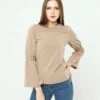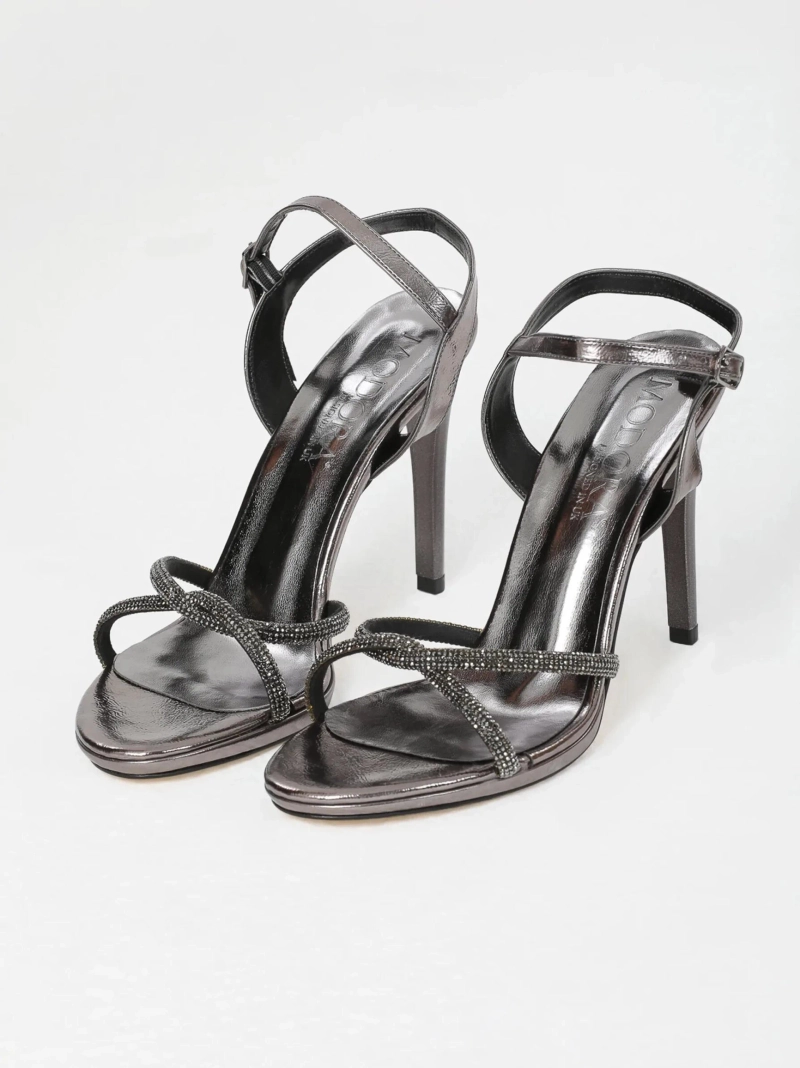Do you like your high heels but don't know how they are made? The majority of women's high-heels are made up of a number of components. A few more high-heel terms have also been added to expand your vocabulary about heels. We'll list all key high heel components from top to bottom, inside to out, with names and images to aid you in your quest to understand more about heels. After reading this article, hopefully, you won't ever need to know what the components of a high heel are named!
The Upper Parts: From toe to heel
1. Upper
All components above the sole and heel of the shoe that make up the anatomy of a high heel are considered to be upper sections.
2. Top-line
High heels have a top-stitched edge that runs along the top of the vamp of the heeled shoe. While giving structure to the top of the shoe, it connects the exterior materials to the lining.
3. Vamp
A high-heel shoe's front panel is where the vamp is found. It covers the top of the foot. It also extends from the upper's front toe region to the back quarter, where the heel starts.
The top toes, often known as toe cleavage, are more visible the lower the vamp. The foot is supported more when the vamp is higher. The vamp is the strap that crosses the foot in a sandal or open-toed shoe.
4. Toe box
In closed-toe shoes, the toes are covered and protected by the toe box, which is a component of the vamp. These come in various shapes, with pointy, square, almond-shaped, and rounded pumps standing out.
Blisters at the toes are less likely to occur with a well-constructed and designed toe box. The toe box is absent from open-toed footwear.
5. Quarter
This is the area directly behind the vamp. It starts at the heeled shoe's rear and continues till the vamp begins. Every element of the heel itself is included within the quarter.
6. Counter
The high heel's rear portion has a rigid substance called the counter. It gives the area behind the heel of the foot form and stability. A well-built counter will support the ankles and fit snugly around the heel to reduce blisters at the heel of the foot.
It will be challenging to walk in heels if your heel is not properly supported. However, don't worry. Understanding shoe anatomy will help prevent heels from slipping out of shoes.
The Lower Part of a High-heel Shoe
7. Sole
The sole of a high-heeled shoe is its component at the bottom. It includes the entire area of the heel that is below the upper. It is made up of the heel, insole, outsole, and any hidden inside components like the shank.
8. Outsole
the portion of the sole that contacts the ground outside of the shoe. High heel shoes are frequently composed of leather or imitation leather.
9. Seat
The seat is the location where the heel fastens to the main body of a high-heel shoe. Most of the time, this meeting place is seamless however some high heels are made specifically to make it visible.
10. Pitch
It is the difference in height between the shoe's heel and its sole. With a platform heel, the pitch is lowered and walking in heels is more comfortable.
11. Heel
It's difficult to overlook this section while discussing high heel components! The heel determines the shoe's style, along with the shoe's actual shape. In addition to stacked leather, heels can also be made of plexiglass, wood, metal, and other materials.
In addition to being wide and bulky, heels can also be cone-shaped or narrow like a stiletto. Heels can be high or as low as a kitten heel.
12. Heel breast
The area of the heel that extends vertically from the arch of the foot is known as the heel breast. It is frequently made as a single piece of material that runs the length of the sole. This is especially noticeable in expensive high heels.
13. Top piece
Have you ever wondered what the name of the tiny bump at the bottom of your heel is? Technically, it is known as the top piece; it is also frequently referred to as a heel tip, top lift, or heel cap.
It gives the heel a secure basis and aids in supplying grip when walking. It is often constructed of sturdy plastic. Many cutting-edge items called heel protectors have been developed to protect and improve traction on your high heels, especially stilettos.
14. Platform
On the front of the shoe, under the vamp and toe box, are platforms, which are a component of the sole. They make the front of the shoe sit higher beneath the football. Numerous high heels shoes come with platforms in a range of heights and materials.
The Inside Parts of a High Heel
15. Insole
The insole, also known as the inner sole or foot bed, is a piece of material that resembles the shape of the bottom of the foot. The shank, foot bed insole cushioning, and outsole is all below it in the interior of the shoe. It is frequently padded to support the arch of the foot and to enhance comfort while standing or walking. High heels often don't have detachable insoles like sneakers or formal shoes do.
16. Foot bed padding
High heels are more comfortable to wear when there is padding under the foot bed to support the wearer's foot.
17. Lining
The material that lines the inner of high-heeled shoes that your foot will directly contact is known as the lining. The lining, which is made of a softer material like leather, improves comfort for the wearer and hides any rough inside seams.
18. Shank
The high heel has a shank inside of it that is hidden after production. It is a hard component between the insole and the outsole that is frequently composed of plastic, metal, or wood. When wearing heels, it supports the arch of the foot and the heel counter.
19. Stiffener
The counter behind the heel of the foot is given shape by stiffeners. They are made of a durable material and are placed between the upper and lining on the rear counter of high-heeled shoes. The counter is given structure by a stiffener, which keeps it from bending and supports the heel of the foot.
Other Parts of a High Heel
Shoe last
The shoe last, though not a direct part of the finished high heel shoe, is an essential element. It is a 3D form that is either made of wood or plastic and is somewhat shaped like a foot. It is thought of as the base of any shoe. It gives the upper of the shoe its shape and serves as the framework for the construction of each shoe's upper.
Wedge heel
A wedge heel is a specific kind of high heel that is thought to have been created by shoe designer Salvatore Ferragamo. It is a heel that is made of one piece that is attached to the outsole and is not intended to separate from the sole.
It lacks the conventional "spike" of a high heel shoe. It can be constructed from a wide range of materials, including wood, plexiglass, cork, and other composites.
Ankle strap
An adjustable strap with hidden elastic that buckles or ties all the way around the wearer's ankle is what is meant by an ankle strap on a high heel.
T-strap
A t-strap is made out of two parts. The first is a strap that is fastened around the ankle or crosses over the instep and is attached to either side of the vamp. It is wrapped onto another strap and attached to the vamp.
Tassels
Tassels can be found on slip-on shoes like loafers and high heel loafers. They provide a decorative purpose. Tassels are typically made of leather or related material and are attached to the instep of shoes.
We hope you understand the different parts of a high heel and that you now know the language used to describe high heels. Of course, the design and construction of each pair of heels vary. One high heel's anatomy will not always be the same as another's because some will have certain components that others do not. This is particularly true when considering hybrid heels, such as stiletto booties, wedge sneakers, or high-heeled loafers.
Numerous heels also feature additional decorative components like straps, buckles, and other straps for aesthetic purposes. Wedding heels and heels modeled after men's shoes are two good examples. You can now shop high heels for women online at Modora.



